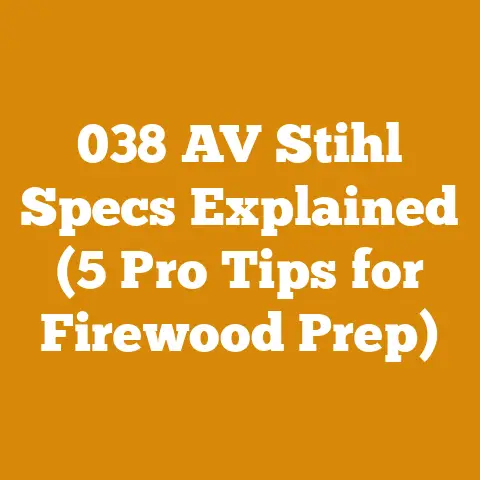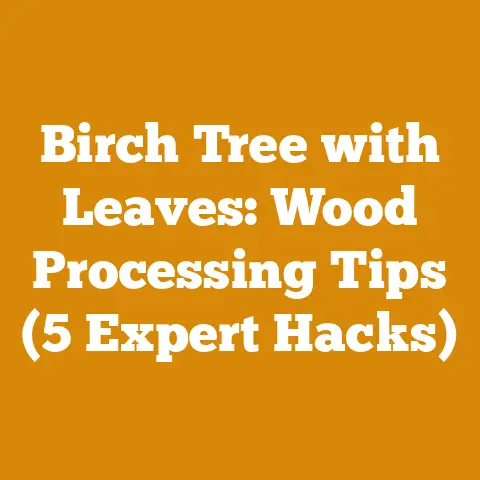Fairy House Out of a Tree Stump (7 Arborist Hacks)
Imagine transforming an old, forgotten tree stump into a captivating fairy house, a miniature world brimming with charm and wonder. It’s a project that sparks the imagination, connects you with nature, and adds a unique touch to your garden. But before you dive headfirst into this enchanting endeavor, it’s crucial to understand the real costs involved. As someone who’s spent years navigating the world of wood processing, logging, and everything in between, I’ve learned that even the most whimsical projects require a grounded approach to budgeting. This article isn’t just about crafting a fairy house; it’s about crafting it smartly, without breaking the bank.
The Allure of Fairy Houses: More Than Just a Whim
Fairy houses have captured imaginations for centuries. They represent a longing for connection with nature, a desire to believe in the magical, and an opportunity to unleash our creativity. But beyond the whimsical appeal, building a fairy house from a tree stump is also a fantastic way to repurpose natural materials, reduce waste, and create a sustainable, eco-friendly garden feature.
Why Choose a Tree Stump?
Tree stumps offer a unique foundation for fairy houses. They are naturally sturdy, often possess interesting textures and shapes, and provide a sense of age and history. Plus, utilizing a stump is a great way to transform an eyesore into a focal point.
HACK #1: Assessing Your Stump – The Foundation of Your Budget
Before you even start dreaming of miniature doors and tiny windows, the first and most crucial step is assessing the tree stump itself. This assessment will directly impact your material costs, labor needs (if any), and the overall complexity of the project.
Species Matters: Hardwood vs. Softwood
The type of wood the stump is made of is paramount. Hardwoods like oak, maple, and beech are denser and more resistant to decay, meaning your fairy house will likely last longer. However, they are also more difficult to carve and work with. Softwoods like pine, fir, and cedar are easier to shape but are more susceptible to rot and insect damage. Cedar, while a softwood, is naturally more resistant to decay than other softwoods.
- Cost Implication: Hardwood stumps, if you need to purchase one, will generally be more expensive than softwood stumps. The increased difficulty in working with hardwood might also translate to higher labor costs if you hire someone to help.
- Personal Story: I once spent a week trying to carve a detailed doorway into an oak stump using only hand tools. It was a labor of love, but I quickly realized I needed to invest in some power tools to make the process more efficient (and less painful!).
Stump Condition: Decay and Stability
Examine the stump for signs of decay, insect infestation, or structural instability. A severely rotten stump might look charming, but it won’t provide a solid foundation for your fairy house.
- Cost Implication: If the stump is significantly decayed, you might need to reinforce it with wood preservatives, concrete, or other materials. This adds to the overall cost. If the stump is beyond repair, you may need to remove it and find a new one.
- Data Point: According to the USDA Forest Service, wood decay can reduce the structural integrity of timber by up to 75% in just a few years, depending on the environment.
- Actionable Tip: Use a screwdriver or awl to probe the stump. If it easily penetrates the wood, it’s likely decayed.
Stump Size and Shape: Design Considerations
The size and shape of the stump will dictate the design possibilities for your fairy house. A larger stump offers more room for elaborate structures, while a smaller stump might be better suited for a simpler design.
- Cost Implication: Larger stumps require more materials to decorate and might necessitate more elaborate structural supports.
- Personal Story: I once found a massive redwood stump on a friend’s property. It was so large that I envisioned building a multi-level fairy mansion with winding staircases and hidden balconies. The sheer scale of the project, however, meant a significantly higher budget for materials and labor.
HACK #2: Tool Time – Chainsaws, Chisels, and Cost-Effectiveness
The tools you’ll need for your fairy house project depend on the complexity of your design and the type of wood you’re working with. Chainsaws are often essential for shaping the stump, creating doorways, and adding texture.
Chainsaw Selection: Power vs. Price
Choosing the right chainsaw is crucial. A small, lightweight chainsaw is ideal for detail work and smaller stumps, while a larger, more powerful chainsaw is necessary for tackling larger stumps and hardwoods.
- Cost Implication: Chainsaw prices range from around $100 for a basic electric model to over $1,000 for a professional-grade gas-powered saw. Consider renting a chainsaw if you only plan to use it for this project.
- Data Point: According to data from various tool retailers, the average homeowner spends between $200 and $400 on a chainsaw for occasional use.
- Personal Story: I started with a basic electric chainsaw, which was fine for small projects. However, when I tried to carve a large oak stump, it quickly became underpowered. I eventually invested in a mid-range gas-powered chainsaw, which made a world of difference.
- Actionable Tip: Look for chainsaws with features like anti-vibration technology and automatic chain oilers to improve comfort and ease of use.
Chainsaw Maintenance: Keeping Your Saw Sharp
Chainsaw maintenance is essential for safety and performance. This includes sharpening the chain, cleaning the air filter, and lubricating the bar.
- Cost Implication: Chainsaw maintenance can add to the overall cost of the project. Sharpening the chain yourself requires a sharpening kit (around $30-$50), or you can pay a professional to sharpen it for you (around $10-$20 per sharpening).
- Data Point: A dull chainsaw chain can increase fuel consumption by up to 20% and significantly increase the risk of kickback.
- Actionable Tip: Learn how to sharpen your chainsaw chain yourself to save money and keep your saw in top condition.
Beyond the Chainsaw: Chisels, Gouges, and Hand Tools
In addition to a chainsaw, you’ll likely need a variety of hand tools, such as chisels, gouges, saws, and carving knives, for detail work.
- Cost Implication: Hand tools can range in price from a few dollars for basic chisels to hundreds of dollars for high-quality carving sets.
- Personal Story: I’ve found that investing in a good set of carving gouges is well worth the money. They allow for much greater precision and control than cheaper tools.
- Actionable Tip: Start with a basic set of hand tools and gradually add to your collection as needed.
HACK #3: Sourcing Materials – Nature’s Bounty and Budget-Friendly Finds
Once you’ve assessed your stump and gathered your tools, it’s time to start sourcing materials for your fairy house. This is where your creativity can really shine, and where you can save money by utilizing natural and recycled materials.
Natural Elements: Sticks, Stones, and Seeds
Nature provides an abundance of materials perfect for fairy house construction. Sticks can be used for fences, roofs, and doors. Stones can be used for walls, pathways, and chimneys. Seeds, acorns, and pinecones can be used for decorative accents.
- Cost Implication: Natural materials are generally free, but you’ll need to factor in the time and effort required to collect and prepare them.
- Personal Story: I often take walks in the woods specifically to collect materials for my fairy house projects. It’s a great way to connect with nature and find unique and interesting pieces.
- Actionable Tip: Collect natural materials responsibly and sustainably. Avoid taking anything from protected areas and be mindful of the impact you’re having on the environment.
Recycled Materials: Adding a Touch of Whimsy
Recycled materials can add a unique touch to your fairy house and help reduce waste. Broken pottery can be used for roofing tiles, bottle caps can be used for windows, and fabric scraps can be used for curtains.
- Cost Implication: Recycled materials are generally inexpensive or free.
- Personal Story: I once built an entire fairy house roof out of old license plates. It was a bit unconventional, but it added a fun and quirky element to the design.
- Actionable Tip: Get creative with your recycling! Look for unexpected ways to repurpose everyday items.
Purchased Materials: Doors, Windows, and Fairy Dust
While you can source many materials from nature and recycling, you might need to purchase some items, such as miniature doors, windows, and other decorative accents.
- Cost Implication: Purchased materials can range in price from a few dollars for basic items to hundreds of dollars for elaborate pieces.
- Data Point: According to online retailers, the average cost of a miniature fairy door is between $5 and $20.
- Actionable Tip: Shop around for the best prices and consider buying in bulk if you plan to build multiple fairy houses.
HACK #4: Design and Planning – From Vision to Reality (Without Overspending)
Before you start building, it’s essential to have a clear design plan. This will help you avoid costly mistakes and ensure that your fairy house turns out exactly as you envisioned.
Sketching Your Vision: Visualizing the Fairy Realm
Start by sketching out your design ideas. Consider the size and shape of the stump, the materials you have available, and the overall aesthetic you’re trying to achieve.
- Cost Implication: Planning ahead can save you money in the long run by preventing costly mistakes and ensuring that you purchase the right amount of materials.
- Personal Story: I once started building a fairy house without a clear plan, and I ended up wasting a lot of time and materials. I learned my lesson and now always create a detailed sketch before starting any project.
- Actionable Tip: Use graph paper to create a scaled drawing of your fairy house. This will help you estimate the amount of materials you’ll need.
Structural Considerations: Stability and Durability
Consider the structural integrity of your fairy house. Ensure that the roof is properly supported and that the walls are strong enough to withstand the elements.
- Cost Implication: Neglecting structural considerations can lead to costly repairs down the road.
- Data Point: According to building codes, roofs should be designed to withstand a minimum snow load of 20 pounds per square foot.
- Actionable Tip: Use strong adhesives and fasteners to ensure that your fairy house is built to last.
Accessibility and Functionality: Making it Fairy-Friendly
Consider how fairies will access and interact with your fairy house. Add doors, windows, pathways, and other features that will make it a welcoming and functional space for your tiny residents.
- Cost Implication: Adding functional features can increase the cost of the project, but it will also make it more enjoyable and engaging.
- Personal Story: I once built a fairy house with a tiny working drawbridge. It was a bit more complicated than a standard door, but it added a lot of character to the design.
- Actionable Tip: Think about the details that will make your fairy house truly special and unique.
HACK #5: Construction Techniques – Building a Lasting Fairy Home
The construction techniques you use will depend on the materials you’re working with and the design of your fairy house. Here are a few tips to keep in mind:
Woodworking Skills: Basic Techniques for Beginners
If you’re new to woodworking, start with basic techniques such as cutting, shaping, and joining wood. There are many online resources and tutorials that can help you learn these skills.
- Cost Implication: Learning basic woodworking skills can save you money on labor costs and allow you to create more intricate and detailed designs.
- Personal Story: I started learning woodworking by watching YouTube videos and practicing on scrap wood. It took some time and effort, but it was well worth it in the end.
- Actionable Tip: Start with simple projects and gradually work your way up to more complex designs.
Adhesives and Fasteners: Choosing the Right Materials
Choose adhesives and fasteners that are appropriate for the materials you’re working with and the environment in which your fairy house will be located.
- Cost Implication: Using the wrong adhesives or fasteners can lead to structural failures and costly repairs.
- Data Point: According to consumer reports, polyurethane adhesives are the strongest and most durable option for outdoor use.
- Actionable Tip: Read the labels carefully and choose adhesives and fasteners that are specifically designed for outdoor use.
Weatherproofing: Protecting Your Fairy House from the Elements
Protect your fairy house from the elements by applying a sealant or varnish. This will help prevent rot, insect damage, and fading.
- Cost Implication: Weatherproofing your fairy house will extend its lifespan and prevent costly repairs.
- Personal Story: I once built a fairy house without properly weatherproofing it, and it quickly deteriorated due to rain and sun exposure. I learned my lesson and now always apply a sealant or varnish to all of my outdoor projects.
- Actionable Tip: Choose a sealant or varnish that is specifically designed for outdoor use and apply it according to the manufacturer’s instructions.
HACK #6: Adding the Finishing Touches – Details That Delight (on a Dime)
The finishing touches are what truly bring a fairy house to life. These details add character, charm, and a sense of magic.
Painting and Staining: Adding Color and Depth
Painting and staining can add color and depth to your fairy house. Choose colors that complement the natural surroundings and enhance the overall design.
- Cost Implication: Painting and staining can add to the overall cost of the project, but it’s a relatively inexpensive way to add a lot of visual appeal.
- Personal Story: I love using natural stains made from coffee grounds or tea bags to add a rustic and earthy look to my fairy houses.
- Actionable Tip: Use exterior-grade paints and stains to ensure that your fairy house can withstand the elements.
Landscaping: Creating a Fairy Garden
Surround your fairy house with a miniature garden. Add plants, flowers, rocks, and other features to create a welcoming and enchanting environment.
- Cost Implication: Landscaping can range in price from a few dollars for basic plants to hundreds of dollars for elaborate designs.
- Data Point: According to the National Gardening Association, the average household spends around $500 per year on gardening supplies.
- Actionable Tip: Use drought-tolerant plants to minimize watering and maintenance.
Lighting: Illuminating the Fairy Realm
Add lighting to your fairy house to create a magical and inviting atmosphere, especially at night.
- Cost Implication: Lighting can range in price from a few dollars for basic solar lights to hundreds of dollars for elaborate electrical systems.
- Personal Story: I love using solar-powered fairy lights to illuminate my fairy houses. They’re inexpensive, easy to install, and add a beautiful glow.
- Actionable Tip: Use low-voltage LED lights to minimize energy consumption.
HACK #7: Budgeting and Cost Management – Keeping Your Project on Track
Now, let’s get down to the nitty-gritty: budgeting and cost management. This is where we translate all the previous considerations into actual numbers.
Initial Investment: Stump Acquisition
If you don’t have a tree stump readily available, you’ll need to factor in the cost of acquiring one.
- Cost Factors:
- Source: Free (from a friend or neighbor), salvaged (from a construction site), or purchased from a tree service or lumberyard.
- Species: Hardwood stumps will be more expensive than softwood stumps.
- Size: Larger stumps will generally cost more.
- Transportation: Factor in the cost of transporting the stump to your property. This might involve renting a truck or hiring a hauling service.
- Estimated Cost Range: $0 (if you can find a free stump) to $200+ (for a large, hardwood stump from a tree service).
Tool Costs: Rent vs. Buy
Decide whether to rent or buy the tools you’ll need for the project. If you only plan to build one fairy house, renting might be the more cost-effective option.
- Cost Factors:
- Chainsaw Rental: $50-$100 per day.
- Hand Tool Purchase: $50-$200 for a basic set of chisels, gouges, and saws.
- Safety Gear: $50-$100 for a helmet, eye protection, and gloves.
- Actionable Tip: Check your local hardware stores and rental centers for tool rental options.
Material Costs: Balancing Natural and Purchased Items
Carefully consider the cost of materials, balancing free or low-cost natural and recycled items with purchased items.
- Cost Factors:
- Lumber: $1-$5 per board foot (for framing and structural supports).
- Roofing Materials: $1-$5 per square foot (for shingles, tiles, or other roofing materials).
- Decorative Accents: $5-$20 per item (for miniature doors, windows, and other decorative accents).
- Adhesives and Fasteners: $10-$20 per container.
- Actionable Tip: Create a detailed materials list and shop around for the best prices.
Labor Costs: DIY vs. Hiring Help
Decide whether to tackle the project yourself or hire a professional to help. If you’re not comfortable using power tools or don’t have the time to dedicate to the project, hiring a professional might be the best option.
- Cost Factors:
- Arborist or Landscaper: $50-$100 per hour.
- Woodworker or Carpenter: $30-$70 per hour.
- Actionable Tip: Get multiple quotes from different contractors before making a decision.
Contingency Fund: Preparing for the Unexpected
Always set aside a contingency fund to cover unexpected costs. This could be anything from broken tools to additional materials that you need to purchase.
- Recommended Contingency: 10-20% of the total project budget.
Example Budget: A Simplified Scenario
Let’s say you want to build a simple fairy house from a small softwood stump that you found for free. You already own some basic hand tools, but you need to rent a chainsaw and purchase some additional materials.
- Stump: $0
- Chainsaw Rental: $75
- Lumber: $20
- Roofing Materials: $15
- Decorative Accents: $30
- Adhesives and Fasteners: $15
- Contingency (10%): $15.50
Total Estimated Cost: $170.50
This is just a simplified example, and your actual costs will vary depending on the specifics of your project.
Actionable Takeaways: Your Path to a Magical, Affordable Fairy House
Building a fairy house from a tree stump is a rewarding and creative project. By carefully planning your budget, sourcing materials wisely, and utilizing the arborist hacks outlined in this article, you can create a magical fairy house without breaking the bank.
- Start with a clear vision and a detailed plan.
- Assess your stump carefully and choose the right tools for the job.
- Utilize natural and recycled materials whenever possible.
- Shop around for the best prices on purchased materials.
- Don’t be afraid to get creative and personalize your fairy house.
- Set aside a contingency fund to cover unexpected costs.
- Enjoy the process and let your imagination run wild!
Building a fairy house is more than just a construction project; it’s an opportunity to connect with nature, express your creativity, and create a magical space for fairies and humans alike. So, gather your tools, unleash your imagination, and get ready to build a fairy house that will delight and inspire for years to come. Remember, the most important ingredient is a touch of whimsy and a whole lot of heart!






